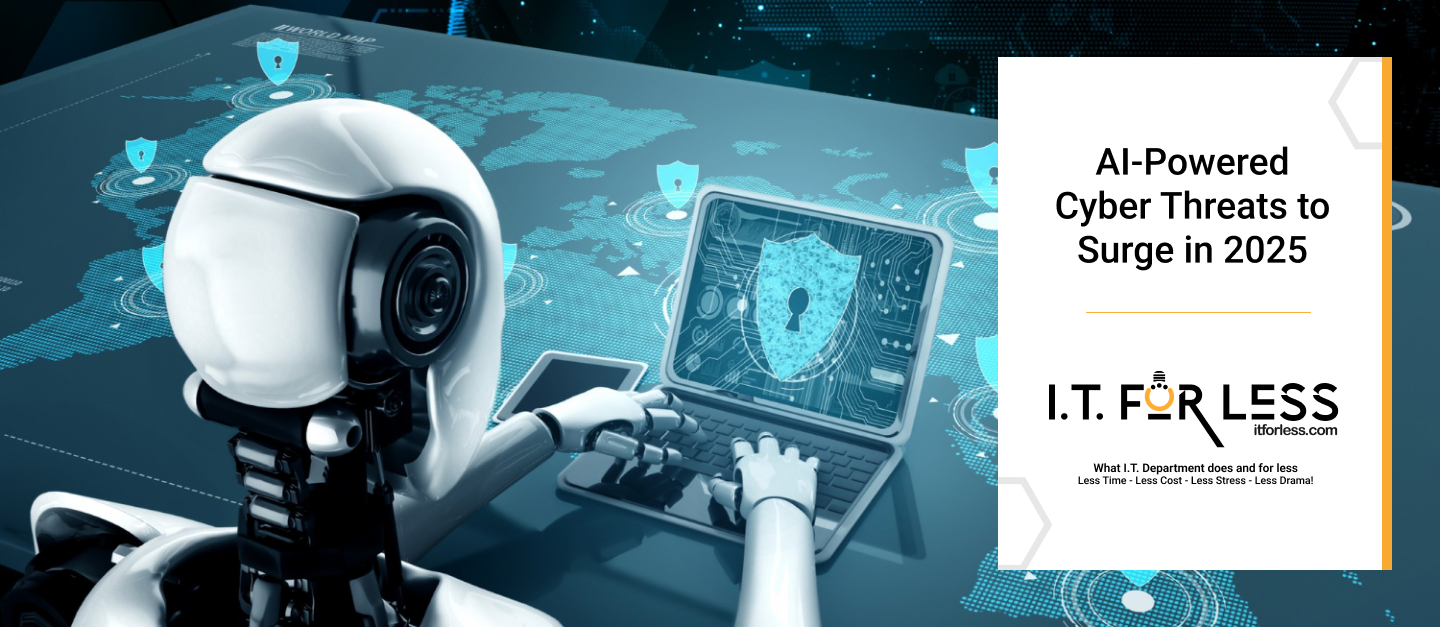As artificial intelligence goes on to revolutionize sectors and make innovation faster, the world of cybersecurity is getting ready for a storm of its own. Experts are warning of an explosion of AI-driven cyber-attacks in 2025, triggering a new dawn of technologically advanced attacks that will put even the most sophisticated security systems to the test.
The Rise of Offensive AI
Artificial Intelligence has been a valuable friend in cybersecurity for a long time—employed to detect intrusions, hunt threats, and perform behavioral analysis. But 2025 will witness a steep spike in offensive AI when cybercriminals use machine learning to make attacks faster, bigger, and more precise.
Unlike other cyber-attacks, AI-based attacks can dynamically evolve, emulate human activity, and bypass traditional security measures. These attacks no longer stick to predictable patterns; they adapt and mature in real-time.
Important Trends to Watch
1. AI-Based Phishing Attacks
Phishing will become more challenging to recognize as attackers use AI-created, hyper-personalized messages that accurately resemble normal human communication. Large language models (LLMs) can produce perfect emails in any language, tailored with stolen personal information to enhance credibility and success rates.
2. Autonomous Malware
We can expect to witness the development of self-directing malware that is able to make independent decisions—deciding when and where to attack based on their awareness of context. These AI-based attacks can remain dormant, monitor their virtual environment, and launch attacks at the most vulnerable time.
3. Deepfakes and Synthetic Media
Deepfake technology, easier than ever to obtain, is being utilized for impersonating executives in CEO fraud attacks, influencing public opinion, and social engineering. In 2025, we anticipate more instances of deepfake audio and video being utilized to circumvent authentication or discredit someone.
4. AI in Social Engineering
Social engineering is being enhanced. AI can scrape, analyze, and exploit publicly available data (social media, corporate sites, etc.) to create very real-looking scams. From deepfake voice calls to phony job interviews, attackers will be relying on AI to manipulate human psychology in bulk.
5. Adversarial Attacks on AI Systems
As organizations become more widespread in deploying AI for security, attackers are figuring out how to take advantage of AI models themselves—tweaking training data, providing adversarial inputs, or reverse-engineering decision logic to evade safeguards.
Why 2025 Is a Tipping Point
Several factors come together to make 2025 a turning point:
Greater AI accessibility: Open models and tools are freely available, reducing the entry barrier for attackers.
Increasing attack surface: IoT, cloud implementation, remote work, and networked infrastructure have created more vulnerabilities than ever before.
Global instability: Geopolitical upheaval tends to lead to cyber conflicts, and AI gives nation-states and criminal networks a robust new capability.
How Businesses and Governments Should React
In response to the growth of AI-enhanced threats, organizations need to build a proactive and AI-empowered defense model. This entails:
- Behavioral analytics for endpoint and network anomaly detection.
- Zero trust architecture to reduce lateral movement.
- Ongoing threat intelligence driven by AI to predict and detect new attack vectors.
- AI-driven phishing and social engineering combat through cyber awareness training.
- Red-teaming and simulation exercises with AI-authored threats as investment.
Final Thoughts
2025 will not only be the year that AI reconfigures how and where we work—it will also reconfigure how and when we are attacked. The cyber battlefield is shifting, and only those who realize and take advantage of AI’s double-edged role—as threat and defense—will be capable of navigating it.
Going forward, collaboration, regulation, and innovation will be essential to staying one step ahead of foes who are both figuratively and literally getting smarter.
